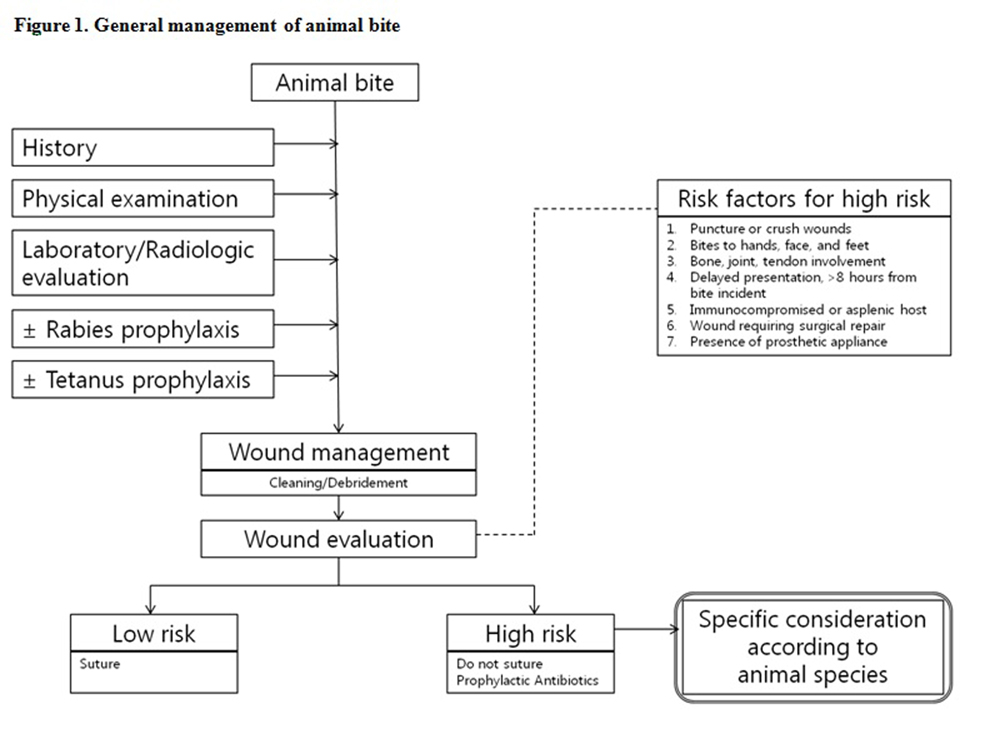|
|
|
|
|
Back to 2014 Annual Meeting Posters
Bite-related Injuries: Implications for Treatment in Plastic Surgery
Kuylhee Kim, M.D.1, Ahmed Ibrahim, M.D.1, Pieter Koolen, M.D.1, Jin Seo Lee, M.D.2, David Yassa, M.D.1, Peter Kim, M.D.1, Bernard Lee, MD, MBA1, Samuel Lin, M.D.1.
1Harvard Medical School/Beth Israel Deaconess Medical Center, Boston, MA, USA, 2Kangdong Sacred Heart Hopsital, Seoul, Korea, Republic of.
BACKGROUND:
Despite the relative frequency of bite wounds, there are few studies that define an optimal standard of care; consequently, various regimens have been used empirically. In this study we reviewed the organisms, antibiotic treatments, and potential procedural interventions involved in bites of different species as well as uncommon but serious systemic illnesses that could potentially be transmitted by such injury.
METHODS:
A narrative review of the literature was performed using the PubMed database spanning articles from 1982 to 2013 to identify all available information relating to the bite related injuries and their treatment regimens (Figure 1).
RESULTS:
All organisms isolated from the infected bite wounds of various species were identified and suggested antibiotic treatments presented based on a review of the literature (Table 1). A majority of bite wounds are empirically treated without wound culture. Superficial wounds should be irrigated with a water-based antiseptic solution (e.g. hydrogen peroxide and saline). Deep or punctured wounds require additional cleaning with the help of a syringe. Primary closure following careful debridement of necrotic tissue has been the favored protocol in almost all recent publications. If bite wounds are punctures rather than lacerations involving the extremities, initially they should be left open. Facial lacerations involving dog or cat bites are almost always closed. Since the presence of foreign material in a contaminated wound increases the risk of infection, subcutaneous sutures should be used sparingly. Physicians may choose to reevaluate wounds that were initially left open after 24-48 hours to determine whether delayed primary closure would be appropriate.
CONCLUSIONS:
This study will aid plastic surgeons in understanding the proper management protocols for the treatment of any potential bite wound that they may come across in practice.
 
Back to 2014 Annual Meeting Posters
|
|




